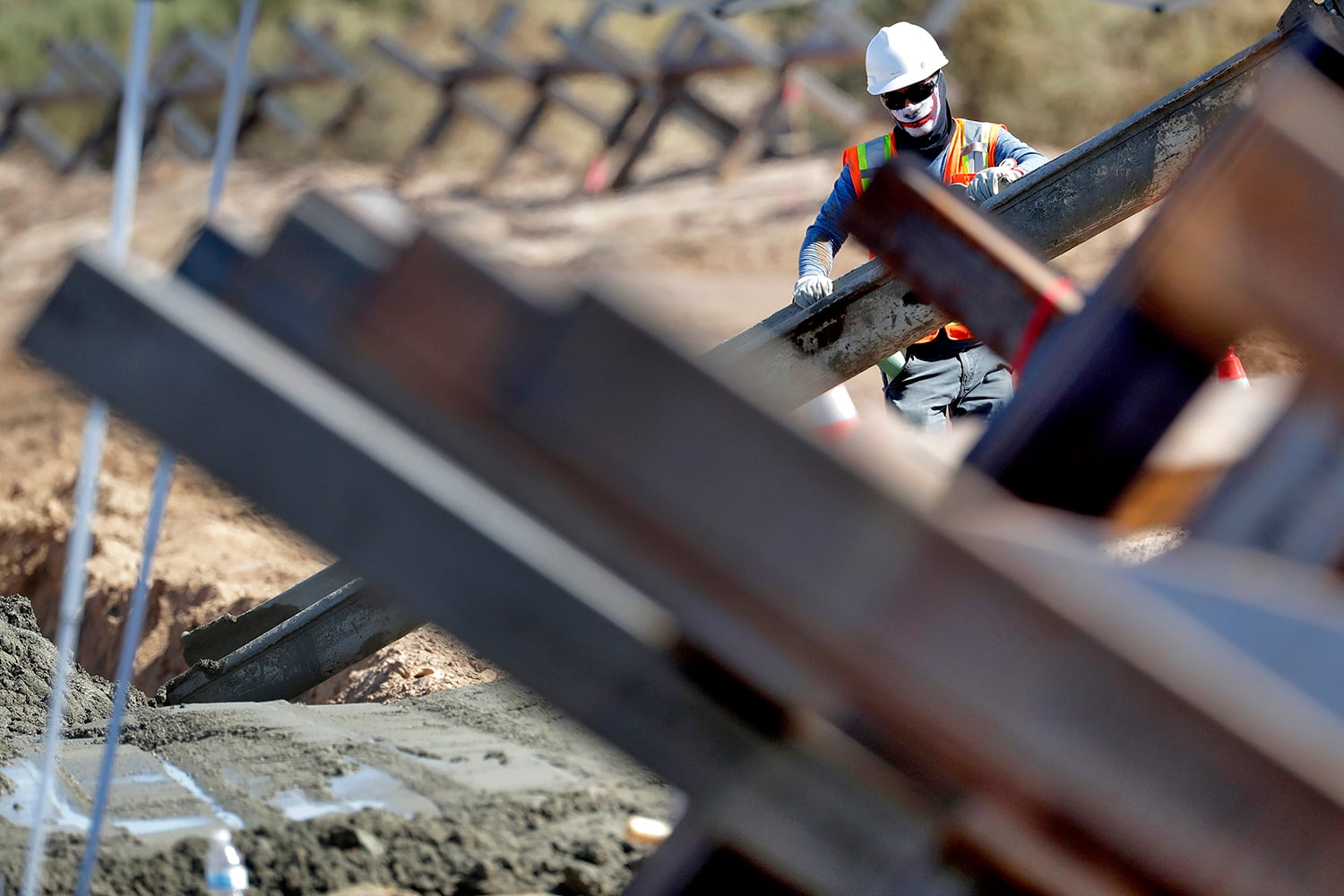In the year since President Trump declared a national emergency along the U.S.-Mexico border, starting the ball rolling on using Homeland Security and Defense Department funds to build border barriers, the Army Corps of Engineers has put up about 23 miles of wall.
Last year, the Pentagon diverted $6 billion of its budget to build barriers in California, Arizona and New Mexico. As of Jan. 13, according to Army Corps of Engineers figures, about $3 billion of that has been awarded for contracts to build 200 miles of barriers.
“I can’t give you any information on any future budget decisions," Pentagon spokesman Jonathan Hoffman told reporters Thursday, in response to reports of internal White House documents showing a plan to siphon another $7.2 billion from DoD accounts this year. "I’m not privy to what those decisions have been at this point.”
While $3.5 billion of that would come from counter-drug operations, the Washington Post reported, another $3.7 would come from military construction accounts.
That’s $200 million more than what the administration set aside last year, which affected more than 100 projects, from training facilities and on-base schools to Hurricane Maria relief for the Puerto Rico National Guard.
That money was meant to restore much-needed readiness, the ranking member of the Senate Armed Services Committee said in a hearing Thursday, as the committee weighed the nomination of James McPherson for Army undersecretary.
“That argument is undermined if the administration shifts milcon [military construction] funding, dictated for critical defense infrastructure, for a border wall that was supposed to be paid by Mexico, not the American taxpayer,” Sen. Jack Reed, D-R.I., said. “And the department should not pursue this path, in my view.”
The first contract, awarded in April with $739 million in counter-drug operations funding, has seen 5 miles of 56 miles completed so far, according to the data. So far, though $621 million in military construction funds have been awarded to build 71 miles of wall since November, zero miles have been completed.
RELATED

Officials had hoped that Congress would put more money toward military construction in 2020 to recapitalize those projects, but that did not materialize.
"What we’ve seen is some of those programs, they’re still fully authorized, and we’ll continue to try to find funds to pay for them, Hoffman said. “Congress did not back-fill some of those projects, and therefore, we’re going to continue to look for them.”
At the same time, those military construction funds have been in jeopardy, as a lawsuit filed by Texas’s El Paso County in February 2019 resulted in an injunction after a judge ruled in October that it was illegal for the administration to re-appropriate funds designated by Congress.
As of Jan. 8, the injunction is lifted and border wall construction can continue with military construction funds while the lawsuit works its way through appeals.
Trump has repeatedly promised that 450 miles of barriers will go up by the end of this year, but as of Friday, there are 100 miles total standing, acting Homeland Security Secretary Chad Wolf said during a recent trip to Yuma, Arizona.
Meghann Myers is the Pentagon bureau chief at Military Times. She covers operations, policy, personnel, leadership and other issues affecting service members.









